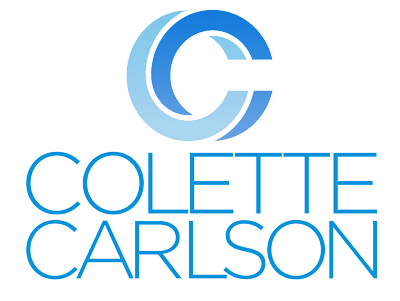 Six years ago my car was in the middle of a five-car pileup. I distinctly remember the moments that followed as individuals emerged from their cars. No one appeared to be physically injured, although one person showed possible signs of shock. The first car’s driver jumped out, surveyed his smashed bumper, and left the scene quickly as if nothing had happened. Two adolescents surfaced from a back seat, sat on the sidewalk, held hands and softly cried. One guy screamed and cursed at the driver who was slow to hit her brakes causing the initial impact and domino effect. She softly repeated, “I’m so sorry, I’m so sorry. Is everyone okay?”
Six years ago my car was in the middle of a five-car pileup. I distinctly remember the moments that followed as individuals emerged from their cars. No one appeared to be physically injured, although one person showed possible signs of shock. The first car’s driver jumped out, surveyed his smashed bumper, and left the scene quickly as if nothing had happened. Two adolescents surfaced from a back seat, sat on the sidewalk, held hands and softly cried. One guy screamed and cursed at the driver who was slow to hit her brakes causing the initial impact and domino effect. She softly repeated, “I’m so sorry, I’m so sorry. Is everyone okay?”
I reacted by going into what my daughters refer to as, Mechanical Mom Mode due to my eerily calm, composed manner in a crisis. A skill, I might add, developed over time through practice. This allows me to quickly provide the anxious woman a towel to lie down, water to hydrate, and a blanket to ease her shivering. Next, I pooled cell numbers and photographed everyone’s driver’s license, insurance card, and car damage while waiting for the police (which I had called) to arrive. Only much later did my own emotions surface.
The coronavirus pandemic brought this memory back to life. Why? I was reminded of how individuals react differently when faced with unexpected, unfamiliar, and uncomfortable situations. Given this truth, leaders must communicate and support their teams, as different as they may be, without fail during a crisis.
And our world is in the thick of a crisis. The foundation of everything we know has changed. No one is immune from riding the “Coronacoaster”, filled with emotional ups and downs. Unlike the obvious steps taken following a car accident, there is no current rulebook for leaders. Nor does anyone know when the ride will end or the long-term effects on people’s psychological state.
Depending on your employee’s circumstances, they may be feeling confusion, anger, anxiety, sadness, fear or all the above. You may work with individuals who still exhibit signs of denial and wish others would stop overreacting.
You might find yourself operating in Mechanical Leader Mode, especially if you support individuals on the front-line or find yourself juggling virtual meetings with homeschooling. Pushing forward and compartmentalizing without giving yourself the stillness or space that allows emotion to surface.
What is a leader to do? As someone who studies human behavior, communication, and stress, my best advice follows to help you communicate and connect right now:
1. Communicate consistently. A study by TINYpulse to measure employee satisfaction with how their employer is dealing with them during the pandemic, rated frequent communication the most important key takeaway for leaders. Staying silent for too long, especially during times of rapid change, encourages workers to fill in the gaps with rumor and hearsay, increasing anxiety and stress. Best to be repetitive on different channels in different ways no matter how tired you are of saying the same thing again and again. Repetition is the mother of learning and ups the odds for message clarity.
2. Communicate candidly about job security. Ever wait for test results from your doctor to come back? The unknown and unsaid cause unnecessary angst. People can handle the truth when your delivery exhibits empathy and compassion. Employees are genuinely concerned about losing their jobs, so speak the truth with a heartfelt response. “As of right now, what I can tell you is we’re exploring all options to keep everyone on board. I’ll keep you apprised should anything change.”
Leaders can model AirBnB’s CEO, Brian Chesney’s, approach. He delivered heartfelt, well-chosen words in a note to his employees: “This is my seventh time talking to you from my house. Each time we’ve talked, I’ve shared good news and bad news, but today I have to share some very sad news. When you’ve asked me about layoffs, I’ve said that nothing is off the table. Today, I must confirm that we are reducing the size of the Airbnb workforce.”
3. We NEED more cowbell! Hearing a cowbell when someone leaves a hospital anchors those inside to a joyful, hopeful feeling. As a leader, you must look for and shine a spotlight on positive moments to continue to build your team’s resilience. Remind them of prior difficult challenges they have overcome. Especially since some team members need your support to shift their focus and stress to a past or recent success, no matter how small.
The ritual of asking my own daughters, “Tell me something good that happened today,” began in pre-school. Those moments were celebrated before focusing on snacks or homework. On the occasion my youngest snapped, “Nothing,” I held space for her to unload. “Wow, sounds like a tough day. Tell me more.” Being fully present for someone and empathetic listening counts as more cowbell. A healthcare director I interviewed for an upcoming virtual program asked her long-term care managers recently, “How is your soul doing?” In a later interview a manager shared, “It’s just downright crazy right now and we’re all running on fumes. But knowing my director has my back is my fuel to keep going.”
4. Know your audience. Leaders cannot ignore that people are grieving for different reasons right now and blanket policies or statements may not be effective. This demands more flexibility, patience, and tolerance than ever. Certain individuals are healthy, but still grieving the loss of attending milestone birthdays, graduations, or weddings. Others have experienced illness, either themselves or someone they know, so the degree of trauma is heightened. And then there are those who lost someone they love in this battle who are literally immersed in the stages of grief. Leaders who can meet people where they are at and provide necessary support will have gone further to engage employees than any benefit previously provided. Your teams will never forget if you ask, “How can I support you right now?” rather than “How quickly can we get back to hitting our numbers?”
5. Double-down on Feedback. Uncertainty and feeling out of control lead to increased stress, anxiety, and lack of focus. More than ever your team needs you to provide direction, as well as, input on their progress. Left only with visual cues provided during a virtual meeting means your team experiences fewer shared smiles, a nodding head, or concerned look than when sharing office space. Sharing why their contribution is vital and connecting it to the organization’s vision reminds employees they ARE making a difference and provides purpose for even the most minor task.
On the flip side, encourage and provide safe channels for feedback to flow your direction. I’ve noticed a dramatic increase in the poll responses and chat feature during virtual programs by encouraging participants to change their Zoom name to the letter A. These anonymous answers, free of judgment and repercussions, dramatically increases both participation and transparency which provides for a better program.
During a crisis, we all want someone to put their arms around us and tell us, “Everything is going to be okay.” As challenging as that may be virtually, by following the strategies above, the “Coronacoaster” will be a safer, smoother, and more secure ride for all.
Why not let Colette Carlson support your teams to stay strong, productive and connected through these challenging times? Give us a call today!







